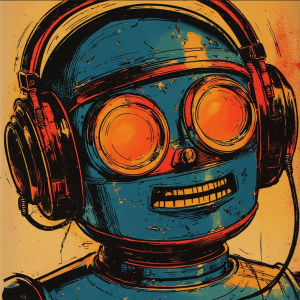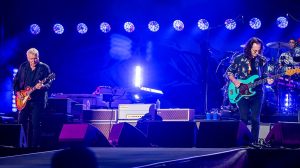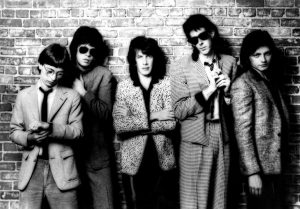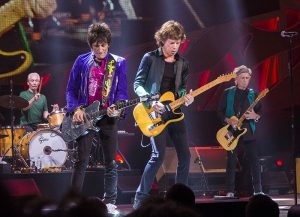Billy Idol Hits the Road Again: A Look Back at the Rebel Yell and What’s Next
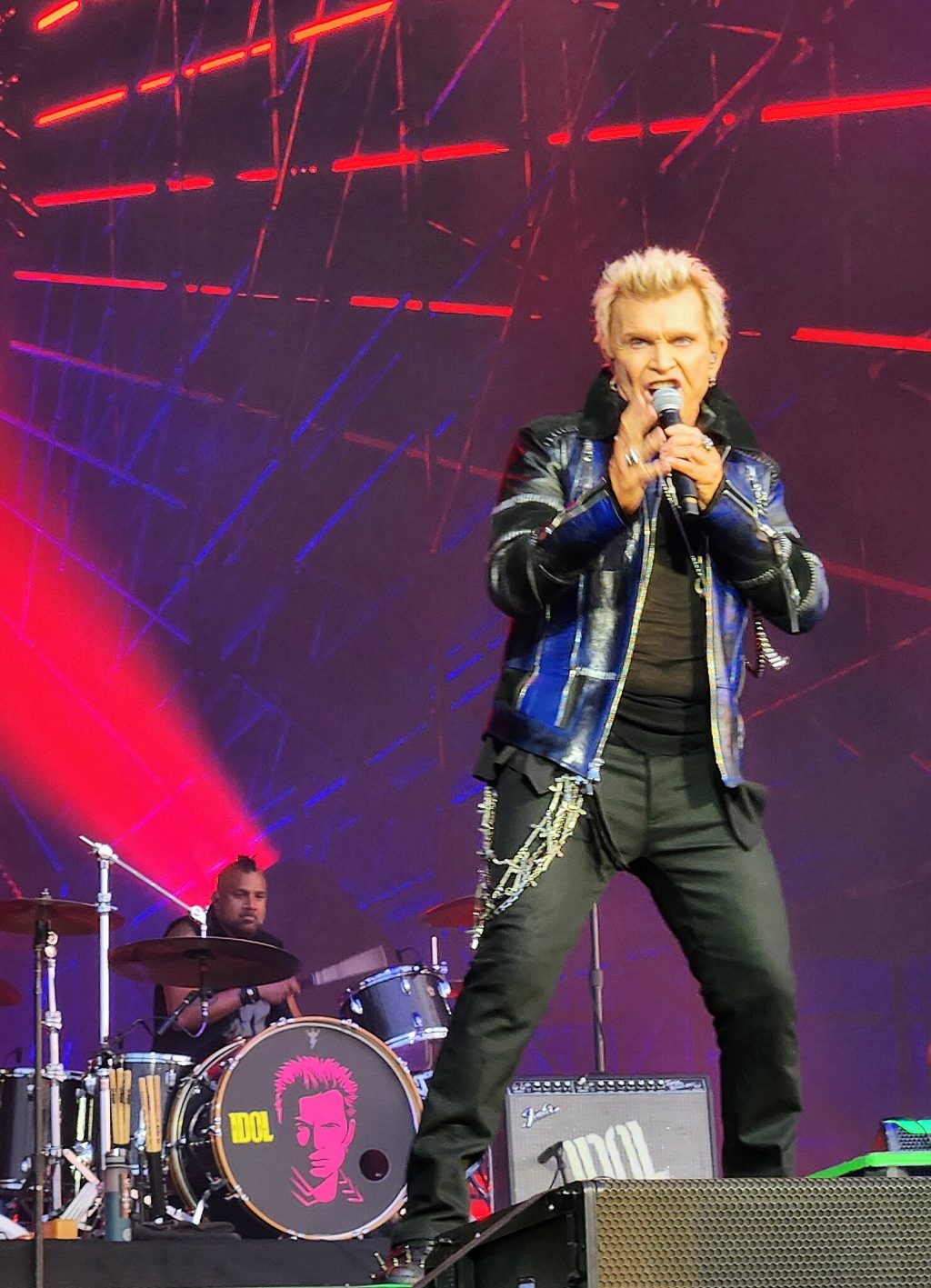
As the summer of 2025 heats up, Billy Idol is proving that age is just a number for rock’s enduring icons. The British punk-turned-new-wave sensation kicked off his “It’s A Nice Day To… Tour Again!” in early May, hitting North American stages with special guest Joan Jett & the Blackhearts on select dates.
With a new album, Dream Into It, dropping in April to mostly solid reviews, Idol’s current run feels like a victory lap for a career that’s spanned punk’s raw edges to MTV’s glossy heyday. At 69, he’s still snarling through hits like “Rebel Yell” and “Dancing with Myself,” drawing crowds that span generations. Recent shows, like the electrifying set at Madison Square Garden on August 20th, have fans buzzing about his energy. Idol bounded across the stage, trading banter with the audience and delivering a set heavy on classics with a few fresh tracks thrown in.
But to understand why this tour matters, we need to rewind to Idol’s roots and trace his wild ride through fame, fallout, and resurgence.
Born William Michael Albert Broad in 1955 in Middlesex, England, Idol’s early life was marked by a family move to Long Island, New York, before returning to the United Kingdom. That transatlantic shuffle might explain his blend of British punk grit and American pop flair.
By the mid-1970s, he was immersed in London’s punk scene, fronting Generation X (originally Chelsea). The band captured the era’s angst with tracks like “Your Generation,” a cheeky response to The Who’s “My Generation.” Generation X released three albums between 1978 and 1981, mixing punk energy with pop hooks, but internal tensions led to their split.
Idol, ever the survivor, headed to New York City, shedding his punk persona for a solo career that would make him a household name.
Idol’s big break came with his 1981 self-titled debut album, produced by Keith Forsey. The re-recorded “Dancing with Myself”—originally a Gen X track—became a club staple, blending new wave synths with rock attitude. But it was 1983’s Rebel Yell that catapulted him to stardom. Collaborating with guitarist Steve Stevens, Idol crafted anthems like the title track, “Eyes Without a Face,” and “Flesh for Fantasy.” The album sold over 2 million copies in the U.S., fueled by Idol’s bleach-blond spikes, leather-clad swagger, and a voice that could both sneer and seduce in the very same breath.
His fame wasn’t just musical. Idol became a symbol of ’80s excess, with numerous tabloid tales of partying and romances that contributed generously to his rebel image.
No discussion of Idol’s rise skips MTV era. In the channel’s heyday, his videos were must-see events, blending cinematic storytelling with his magnetic presence. “White Wedding” (1982) featured a gothic bride and Idol’s snarling delivery, becoming a staple of the network’s rotation. “Rebel Yell” showed him in a leather jacket, performing amid flames and fans, capturing the song’s raw energy. But “Eyes Without a Face” was the pinnacle—a horror-inspired clip with eerie masks and a brooding atmosphere that racked up heavy airplay. MTV’s influence can’t be overstated; it turned Idol into a visual icon, helping Rebel Yell dominate the charts.
His 1987 album Whiplash Smile kept the momentum going with “To Be a Lover” and “Sweet Sixteen,” but cracks were beginning to show. Stevens departed amid creative differences, and Idol’s party lifestyle began to catch up with him.
The 1990s brought a downturn. Idol’s 1990 album Charmed Life spawned “Cradle of Love,” with a video directed by David Fincher that earned him a Grammy nod, but a near-fatal motorcycle accident in 1990 sidelined him. The mishap left him with severe leg injuries, forcing a rethink of his life. He dabbled in acting, appearing in films like The Doors (1991) as a roadie and The Wedding Singer (1998) as himself. His 1993 album Cyberpunk experimented with electronic sounds but flopped commercially, criticized for jumping on the grunge bandwagon too late.
By the late ’90s, Idol faded from the spotlight, dealing with personal demons that included addiction. He later detailed his struggles in his 2014 memoir Dancing with Myself, revealing battles with drugs that nearly derailed everything.
The 2000s saw Idol rebound. He reunited with Stevens for tours and released Devil’s Playground in 2005, his first studio album in 12 years, blending punk roots with modern rock. Hits compilations and VH1 appearances kept him relevant, but it was his 2014 album Kings & Queens of the Underground that marked a true comeback, earning praise for its reflective lyrics and Stevens’ guitar work.
Idol also explored acting more, starring in TV shows like Californication and voicing characters in animated films. Offstage, he became an advocate for sobriety, crediting meditation and family for his life-saving turnaround. His 2022 EP The Roadside and 2023’s The Cage showed he still had fire, with tracks like “Bitter Taste” nodding to his past while looking forward.
Now, in 2025, Idol’s tour is a testament to his staying power. The “It’s A Nice Day To… Tour Again!” kicked off in Phoenix on April 30 with Joan Jett, a fitting punk-rock pairing. Reviews from Tampa and Saratoga, NY, highlight Idol’s charisma—he’s still got the sneer, the spikes (albeit grayer), and a voice that holds up on “Mony Mony” and “White Wedding.”
At the Madison Square Garden show he bantered about his age, quipping, “I’m not getting any younger, but the music keeps me going.” The setlist mixes staples with cuts from Dream Into It, his latest album released April 25, which has been called a solid return to form with tracks like the title song blending ’80s vibe with contemporary production.
By all accounts, Idol looks quite fit. His post-accident focus on health seems to be paying off for him. Reviews note his energy, though he wisely paces himself more than in his wild days. The tour heads international in October, hitting Mexico City on November 30, with fans praising his interaction and Stevens’ shredding.
Idol’s journey—from punk kid to MTV king, through crashes and comebacks—mirrors rock’s resilience. As he tours in 2025, it’s clear the rebel still yells, reminding us why he’s a classic rock staple.

